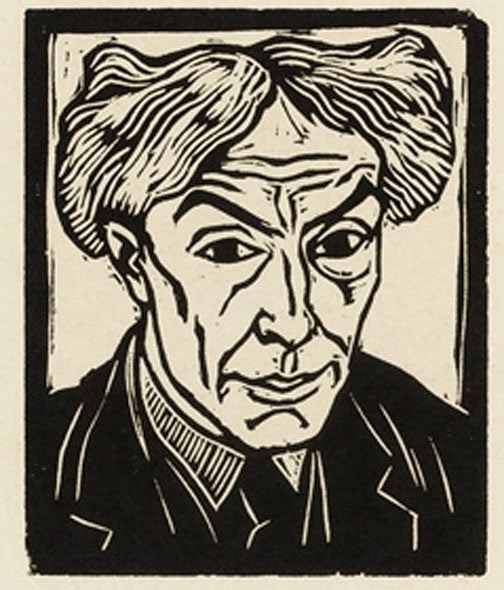Magazine design, 1966
The modern movement in the visual arts is often defined as mid-20th-century modern, although the movement began in the late-19th century
A modern room about 1910
as a reaction to the past.
It's difficult for us to decide about the decorating
trends in this room from the same time period.
Is it modern or not?
Certainly the stove disguised as a baroque
piece of furniture is not modern---but
that wallpaper might be the ultimate in new trends.
There was often a conflict for
advocates of modernism. In Europe
the rising agressive nationalism was
in conflict with the so-called international
style. Some were conflicted about rejecting
their glorious design past.
In establishing a national identify worth fighting about, politicians advocated
incorporating folkloric designs into modernism.
Modern adaptation of German peasant dress in Hitler's Germany.
In the U.S. modernism was combined with
a "colonial" look to create an invented glorious past,
an "authentic" traditional look.
The Colonial Revival was a popular mish-mash
of modern and not modern.
About 1970, modernism became old-fashioned (an oxymoron if there ever was one.)
Why?
1) Taste swings between cluttered and austere.
People were tired of visual austerity.
It was time for a Victorian revival
2) New generations want to distance
themselves from Grandmother's taste.
The 1936 movie may have been called Modern Times,
but the trendy set looked old-fashioned by 1975.
3) Modernism had a lot of rules. The younger
generation was interested in eclectic design
ideas.
Could Grandma have been modern?
4) We had a hard time identifying modernism
Metal furniture by Norman Bel-Geddes
and what we could identify we didn't like.
All of which sent modernism into retirement.
Until everything switched again.
The 21st century's younger generation wants to distance itself
from the taste of the old.
Austerity has replaced clutter.
Chair by Norman Bel-Geddes
And modern is hip again.
(Oops! My nephews told me not to use the word hip. It's not hip.)
How about:
Modern is groovy again.
You see my point.










.JPG)



_08.jpg)






































12345t.JPG)




.JPG)
)fowBQr!CV11Bg~~60_57.jpg)


.JPG)
meJw%2B1BRM4RedFHQ~~60_57.JPG)

PNpJkbw~~60_57.jpg)
